The Audi Q3 conceals its tall stature better than most family SUVs and for the majority of buyers, it’s the way the Q3 looks that pulls them in. It’s more versatile than the Sportback, which makes it roomy enough for smaller families.
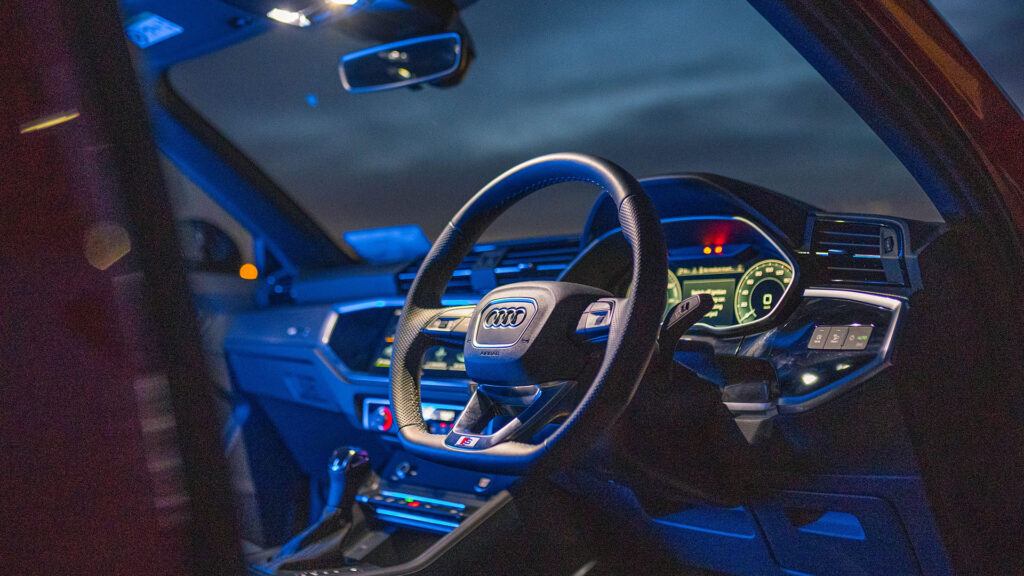
Special mention : Hybrid has around 40 kms of real world easy-going use. Virtual cockpit, the original and still the best. Tango Red is eye catching especially with added trim options.
Needs work : Lane Assist is either hidden in a menu or fixed on, it does lessen as it learns along Ireland’s badly designed roads. Seat is low set and pedals are a little high.
| BHP 245 | Petrol / Hybrid / Auto |
| 0-100 km/h in 7.3 seconds | Road Tax €140 |
Price: €51,365.00 As Spec’d €60,288.00 | Boot space 380 litres |
The Q3 combines sharp styling with the latest technology, great build quality and that Audi style ride and handling. The Q3 received a full five-star euro NCAP rating and achieved a 95 percent score for adult safety and 86 percent for child passenger protection.
The Q3 45 TFSI e S Tronic is powered by a plug-in hybrid powertrain with a turbocharged 1.4-litre four-cylinder petrol engine, a 114bhp electric motor and a 13kWh lithium-ion battery pack. Together, they deliver a total output of 242bhp with a maximum of 400 Nm of torque. The Q3 45 TFSI e will recover a full charge in three hours and 45 minutes.
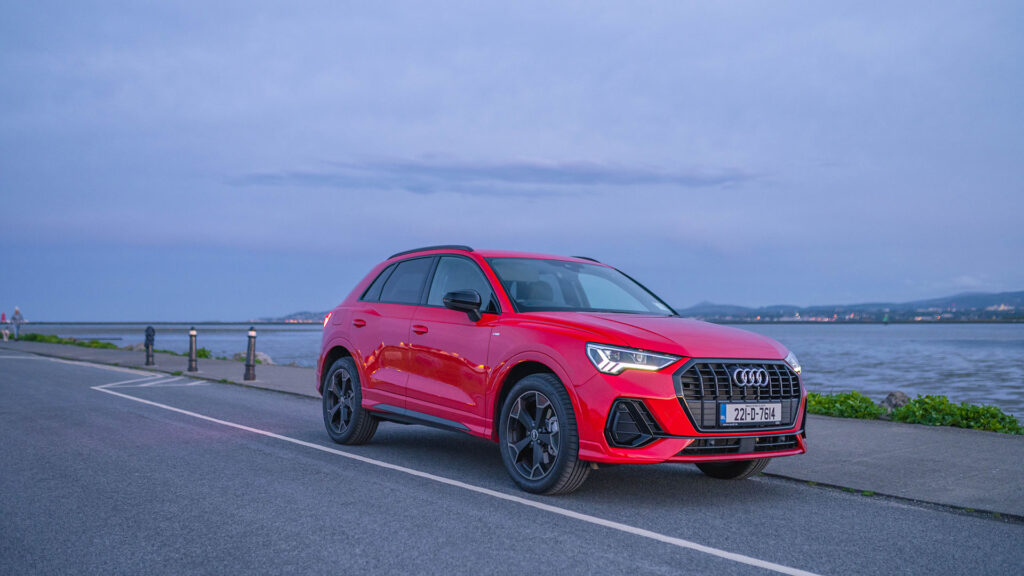
Its main competition comes in the form of the Range Rover Evoque PHEV and Volvo XC40 Recharge T5, BMW X1, Mercedes GLA, Jaguar E-Pace and Volvo XC40 at the premium end of the crossover sector. The Q3 really stands out in Tango Red and gets the nod from other Audi drivers.
All models come with Audi’s hugely impressive Virtual Cockpit digital dash, alloy wheels and LED headlamps, while buyers have the option of SE and S line trim levels. The virtual dash allows for far more configurability than conventional instruments, as well as enabling navigation maps to be displayed right in front of the driver.
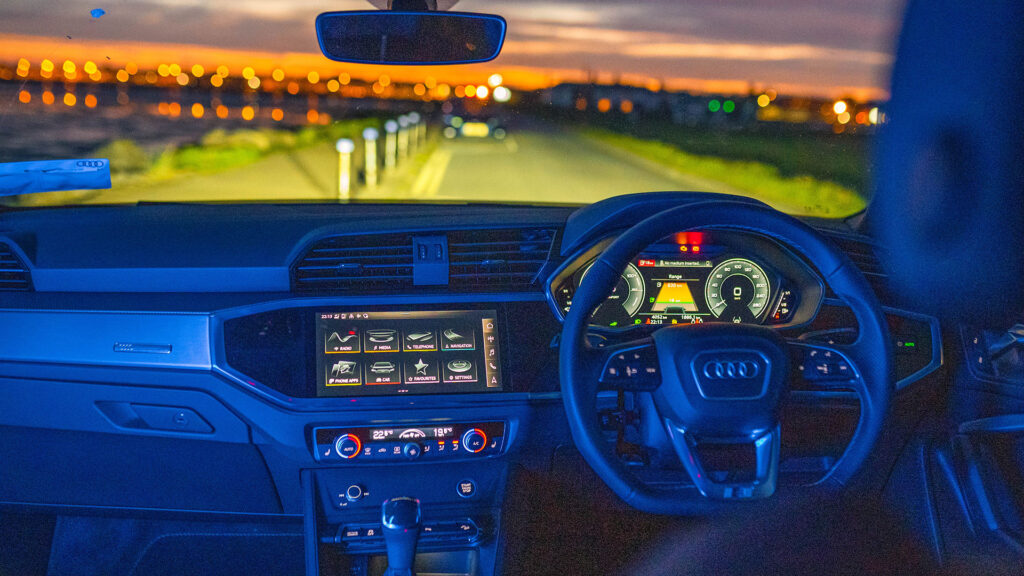
As with most curved rear rooflines, the rear view suffers from the curve and small rear window but rear parking sensors are standard across the range, and a rear-view camera is available as an option.
There’s a good range of adjustment to the steering wheel and driver’s seat, but adjustable lumbar support costs extra. You don’t sit quite as high as you other SUV’s , but you still get a good view of the road ahead, helped further by fairly slim front pillars.
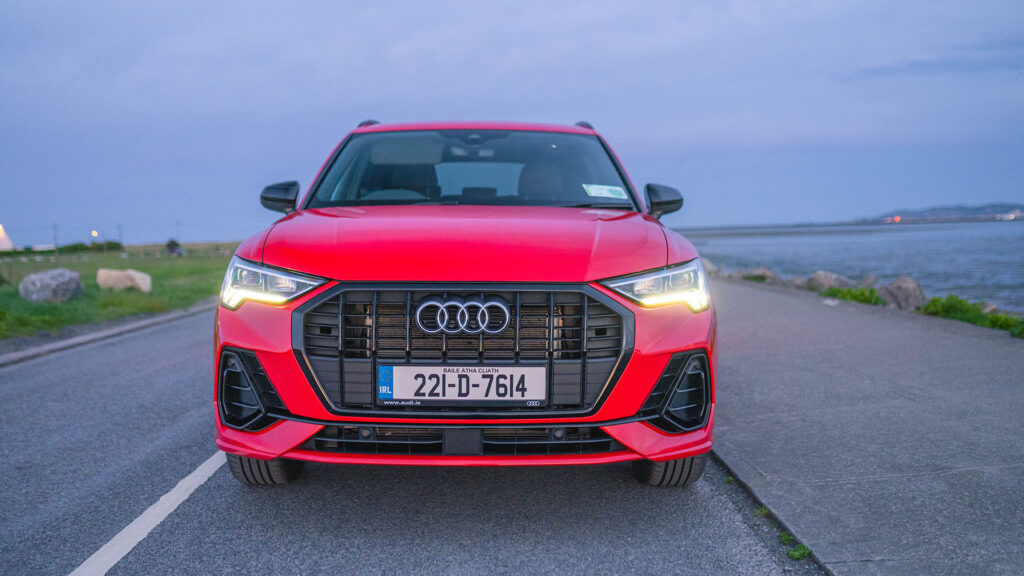
This new 45 TFSI e plug-in hybrid takes 7.3 seconds to from rest to 100km/h, has a top speed of 210 km/h and thanks to its low 44-45g/km CO2 emissions, if you keep the battery charged you could get up to 40 kms in electric-only mode.
Inside the cabin the buttons and switches operate with a feeling of precision, and certain versions spoil the occupants with metal accents and touchy-feely Alcantara suede trims. Apple CarPlay and Android Auto smartphone screen mirroring come as standard on all models. S-Line trim comes with Sport seats in front in cloth/leather, Matt brushed aluminium inlays, Black headlining and the LED interior lighting pack.
The TFSIe PHEV has less boot space because of the battery which leaves it with just 380 litres. You still get more capacity than the BMW X2 boot has, though. A large buggy will fit in easily, and you can fold down the rear seats if you need extra load space.
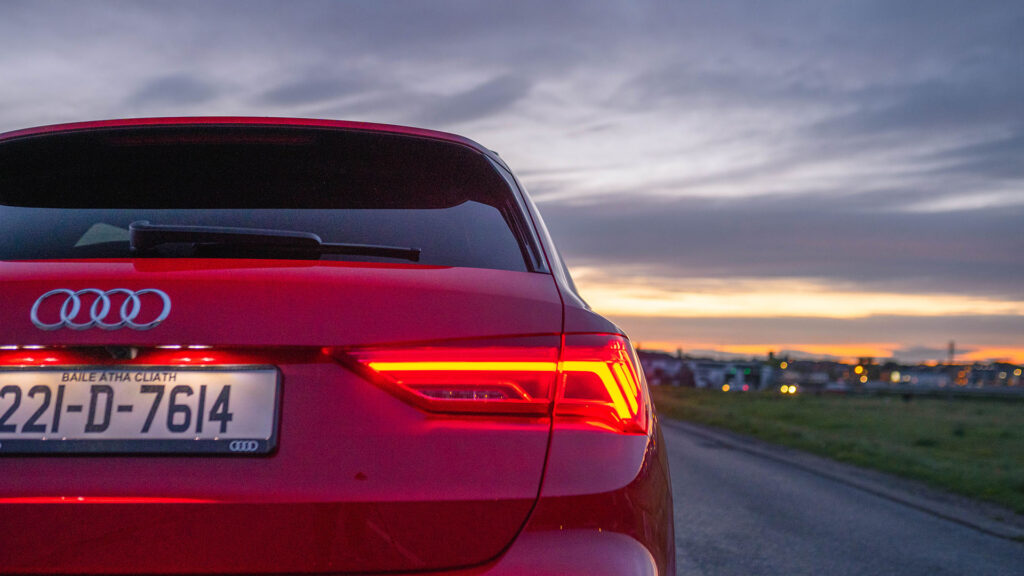
A taller profile, less rakish bonnet and more upright windscreen differentiate it from previous versions. Coupled with the more angular grille and boxy flared wheel arches, it definitely makes for a stronger presence on the road.
The car is built with Audi’s thorough attention to detail, and there’s a genuinely high-quality, precision feel to the way it’s put together, inside and out. The cabin has been replaced with a set-up that’s easily as good as anything else in the class.
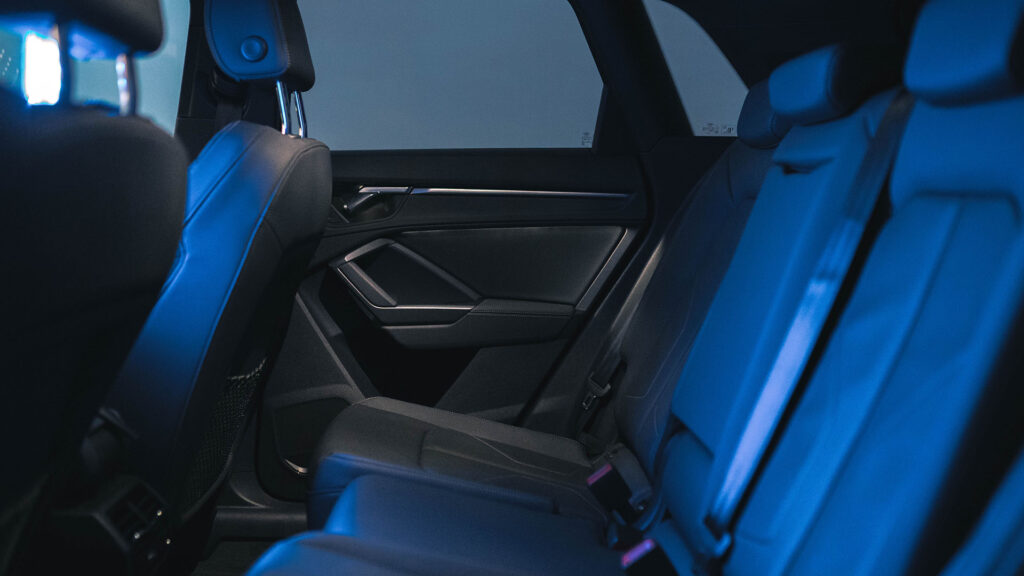
The standard audio set-up is a six-speaker system with DAB, Bluetooth and Audi Smartphone Interface. With top spec MMI Navigation Plus you get the added benefit of an even wider display and full-colour Google Maps. The central touchscreen is impressive too, but does show fingerprints quite badly.
The Q3 gets automatic emergency braking (AEB) with pedestrian and cyclist detection and lane-departure warning, while blind-spot monitoring, which Audi calls Side Assist, is available as part of the Driver Assist pack. S Line brings a more aggressive exterior look that includes 19-inch wheels, but doesn’t add a whole lot more in terms of practical equipment.
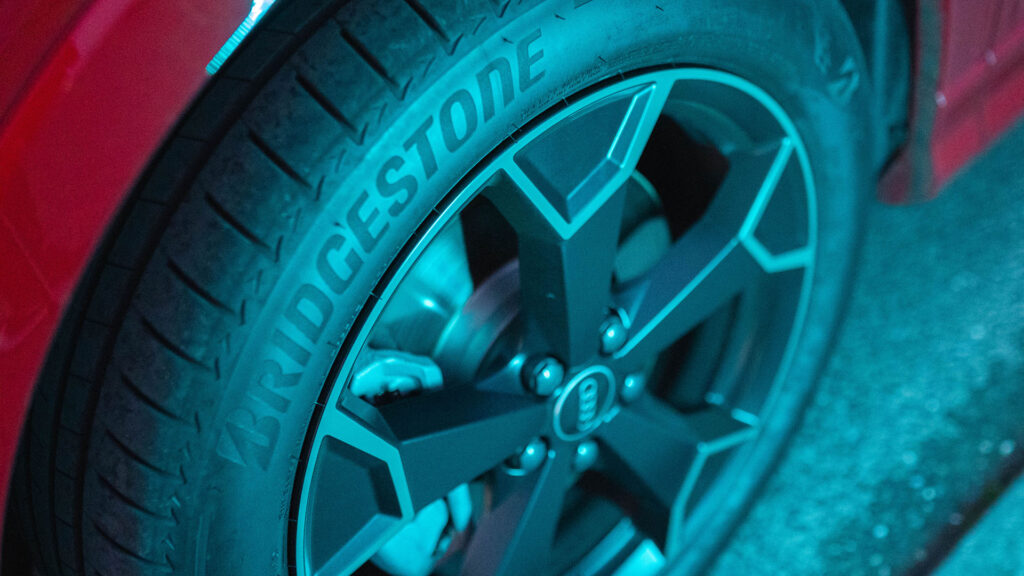
Its mild-hybrid technology recuperates a small amount of energy as you brake, stores it in a small battery and deploys it through an electric motor to assist the petrol engine. It works well, improving acceleration and fuel economy, but the engine still feels strained when worked hard.
The 2.0-litre (45 TFSI) petrol gives you 242bhp for a hot-hatchback-like 0-100 km/h time of 5.8sec, delivering its best if you keep the engine spinning at 3000rpm or more. It’s not cheap, though. The 45 TFSIe plug-in hybrid has an identical power output, but with a slower 7.3sec 0-100 km/h time.
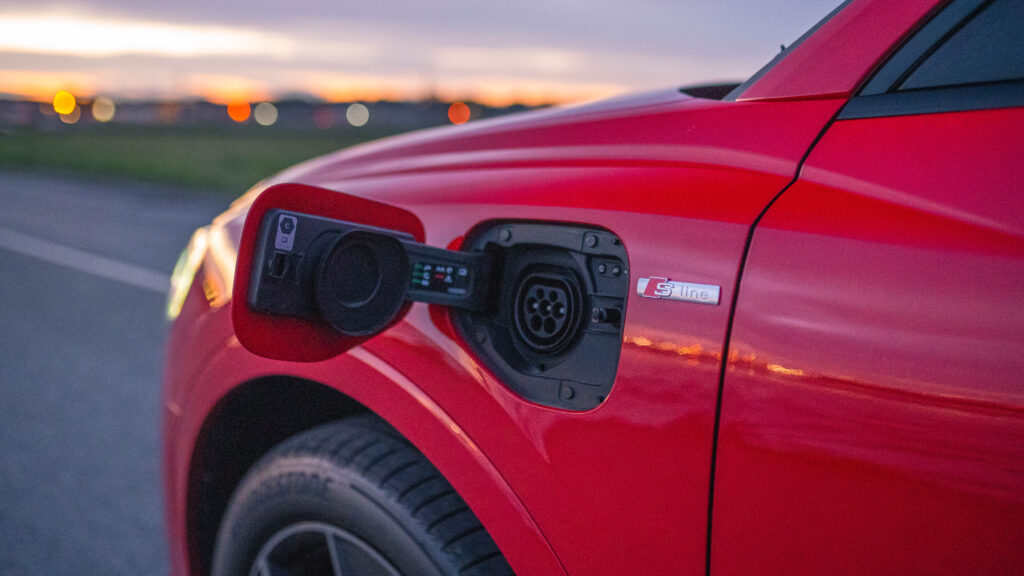
Audi’s Drive Select system is standard across the range, and allows you to adjust how the car feels on the road. Dynamic is supposed to be the sportiest mode, and combines heavier steering and sharper (if often jerky) accelerator responses. It also firms up the adaptive suspension, if you have it fitted.
The Audi Q3 is practical and has plenty of tech. Road noise is well suppressed as long as you avoid those bigger wheels that always look so good, and wind noise is limited to minor buffeting around the door mirrors. The TFSI e is best suited to those who can make full use of driving in full-electric mode by doing short journeys and charging up regularly.
